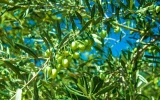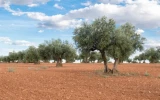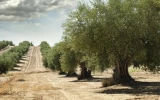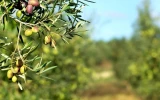How Much Water Do Olive Trees Need to Grow?
Olive trees are hardy trees that are well-adapted to grow in areas with limited water resources, making them a popular choice in arid and semi-arid regions. Despite their drought tolerance, the amount of water olive trees need to grow optimally can vary based on several factors, including climate, soil type, tree age, and stage of growth. In this article, we'll find out how much water these trees need for optimal growth and good yield.
Olive trees, once established, generally require around 15–20 liters of water per tree per week under normal conditions. However, in hot and dry climates, this need can increase to 30–40 liters per week, especially during the peak summer months, to prevent stress and ensure healthy growth.
Olive trees, both young and mature, exhibit distinct preferences in their hydration needs. Younger saplings demand more regular, lighter watering sessions while venerable, mature trees thrive on infrequent but thorough watering. Let's find out why and how they differ.
Summary
- Olive trees require consistent but modest watering, with a preference for deep watering methods to ensure moisture reaches the roots.
- Young olive trees need more frequent watering, approximately 2–3 gallons per tree per session, depending on soil type and climate, to support healthy root development.
- Annual water needs for olive trees range between 24 and 30 inches, translating to 1-1.5 inches per week during the growing season, with a reduction in cooler months.
- Overwatering and underwatering can significantly affect olive trees, leading to issues such as root rot, stunted growth, and susceptibility to pests and diseases; proper monitoring and adjustment are crucial.
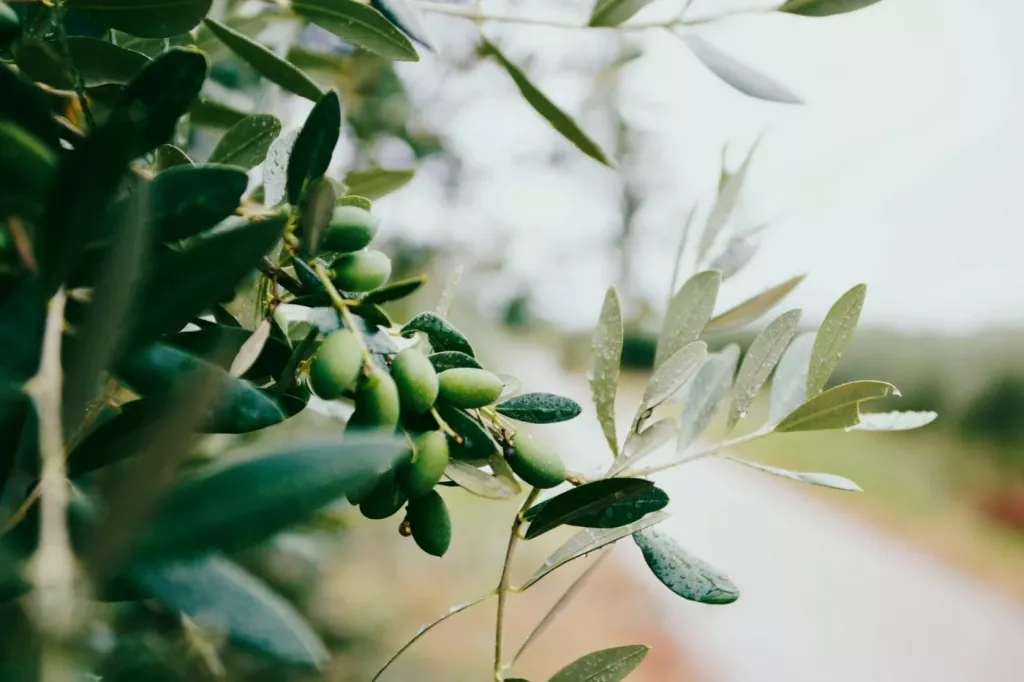
On this page:
How Much Water Does an Olive Tree Need per Day?
Olive trees are drought-tolerant and don't require daily watering. Their watering needs vary depending on the season and the tree's age.
Younger olive trees need more frequent watering than established ones
- Young olive trees: Water your young olive trees once a week with about 2–4 gallons of water.
- Mature Olive Trees: They typically need less frequent watering. Watering once every two weeks with approximately 4–6 gallons should suffice during the growing season.
To help you identify the age of the tree, you can use some useful tips from this article.
General considerations before watering
Try to adjust if you notice the soil is dry or too wet. Here's a simple method to check:
- Test soil moisture: Feel the soil about 2–3 inches deep. If the soil is dry at this depth, it's time to water.
- Water amount: Provide enough water to moisten the soil to the depth of the roots but avoid waterlogging.
Watering requirements for indoor olive trees
Indoor olive trees in pots have slightly different needs. They should be watered when the top inch of soil feels dry. Typically, this might be around 1–2 gallons per week but always check the soil first.
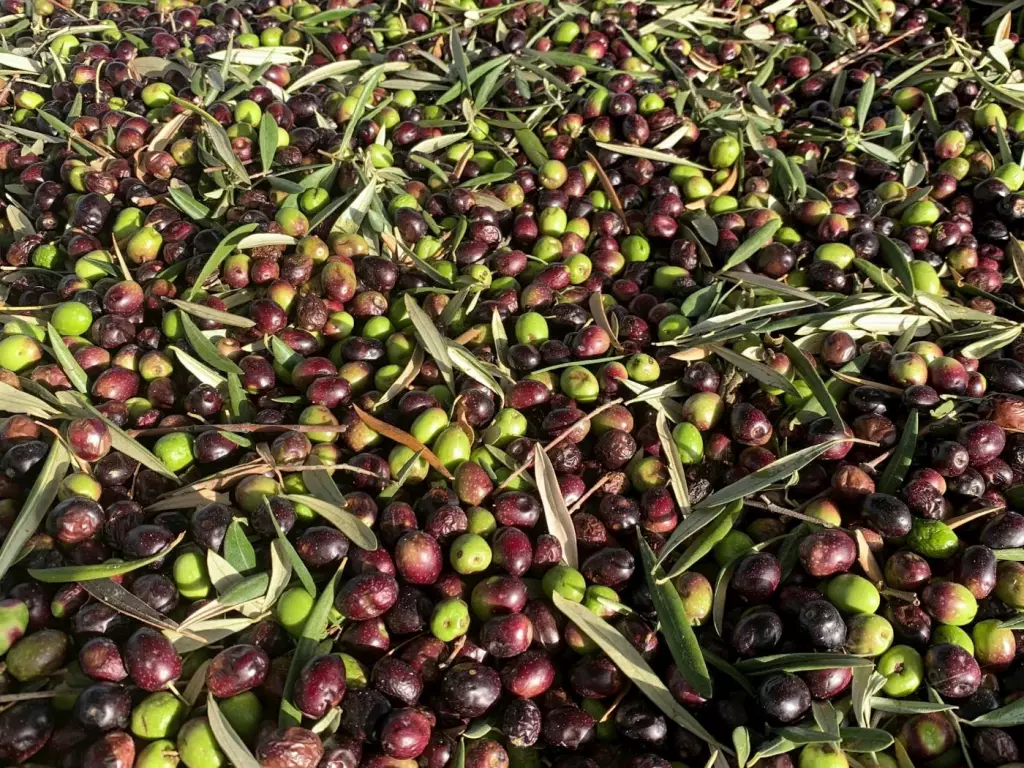
When temperatures are cooler and the tree isn't growing actively, you'll want to reduce the frequency of watering to prevent overwatering, which can lead to root rot.
How Much Water Do Olive Trees Need Per Year?
When it comes to annual water needs, your olive trees are not particularly thirsty. Throughout the year, they require about 24–30 inches of rainwater or equivalent irrigation.
This breaks down to roughly 1–1.5 inches per week during the active growing season, which typically runs from April through September.
During the cooler months, as the trees enter dormancy, they won’t need as much water. A good guideline to follow is a reduction to 0.5–1 inch per week.
These guidelines are especially pertinent if you’re growing olive trees in a climate similar to their Mediterranean origins.
It's key to remember that olive trees fare well with less rather than more water; they are drought-tolerant by nature.
Consistent, modest watering is crucial to helping them thrive without oversaturating the soil.
Deep watering methods are preferred, ensuring moisture reaches the roots where it's needed most.
Watering Needs of Young Olive Trees
Young olive trees have specific requirements for water that differ significantly from those of mature trees. This section breaks down the watering frequency, the amount of water needed, and the best methods for watering young olive trees.
Watering frequency
The frequency of watering young olive trees is largely determined by the tree's age, climate conditions, and soil type.
First-year post-planting
It's recommended to water the trees at least once a week. However, the local climate significantly influences the exact frequency:
- Dry climate: In hot, dry areas, young olive trees may require watering twice a week or more to prevent the soil from completely drying out.
- Cooler climate: Conversely, in cooler climates, less frequent watering is necessary. The key is to ensure the soil does not become waterlogged, indicating overwatering.
Amount of water
The quantity of water to provide at each watering session is critical for encouraging healthy root development. Aim to supply 2–3 gallons of water per tree during each watering.
Soil type considerations
- For sandy soils, which drain quickly, err on the side of 3 gallons to ensure adequate hydration.
- For denser, clay-rich soils that retain moisture longer, 2 gallons is usually sufficient.
Watering method
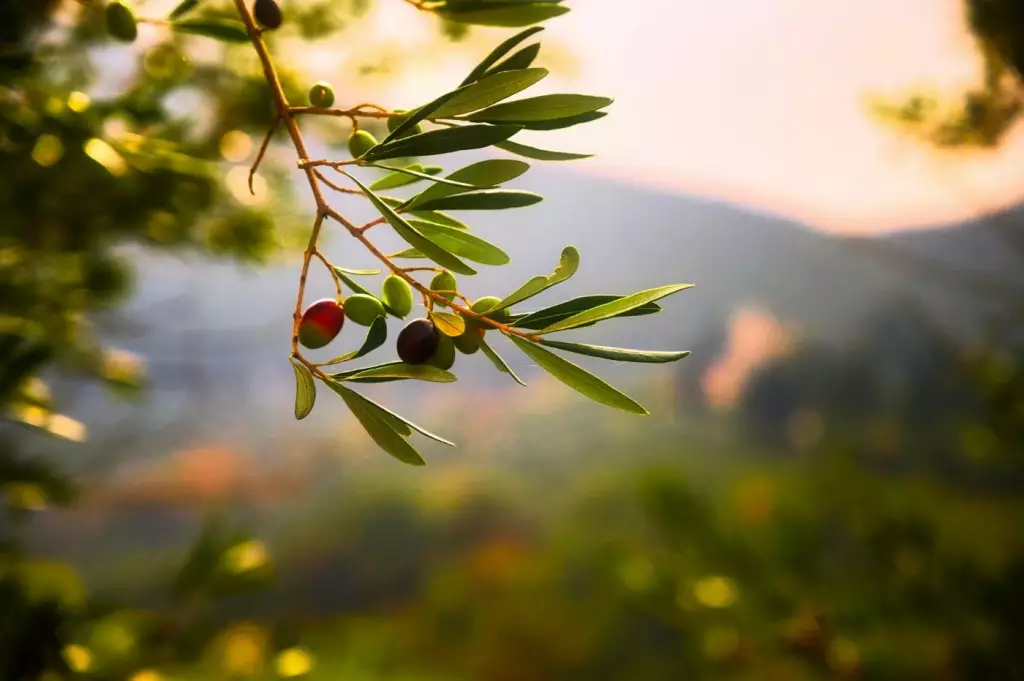
How you water young olive trees is as important as the frequency and amount.
- Deep watering: You need to water deeply and slowly, targeting the tree's roots directly. This method promotes the growth of deep, robust root systems. Healthy olive trees should have expansive roots to stabilize the tree.
- Avoiding shallow watering: Shallow, superficial watering should be avoided as it can lead to the development of shallow root systems. Trees with shallow roots are less capable of withstanding drought conditions as they mature.
Signs of Adequate Hydration
You'll know your olive trees are adequately watered by observing a few indicators:
Examine leaf appearance
The leaves of your olive tree should be a vibrant green, showing no signs of yellowing or wilting. This signals a happy, healthy tree with enough moisture.
Feel the soil
The soil itself offers clues about hydration levels—aim for well-draining soil with consistent moisture.
Perform a touch test; the soil should feel damp but not soggy an inch below the surface. If you're unsure, a moisture meter can give a more precise measurement.
Effects of Overwatering and Underwatering
Overwatering your olive tree can lead to stress for the plant, creating an environment prone to root rot and pests. If your tree is sitting in standing water, the roots may suffocate, inhibiting the tree's ability to absorb nutrients effectively.
On the other hand, underwatering can be just as detrimental. Your tree may show signs of distress through curling or wilted leaves, indicating a desperate need for hydration.
In severe cases, prolonged lack of water can stunt growth and even lead to the tree's demise.
| Aspect | Overwatering Effects | Underwatering Effects |
|---|---|---|
| Soil and roots | Soggy soil, waterlogged roots, prone to root rot | Dry soil, inability for roots to function properly |
| Plant health | Stunted growth, pest attraction, increased susceptibility to diseases | Wilted or curling leaves, stunted growth, increased susceptibility to pests |
| Nutrient uptake and transport | Inefficient nutrient uptake due to anaerobic conditions | Reduced nutrient transport due to lack of water |
| Photosynthesis and growth | Hindered due to stress and poor nutrient absorption | Severely limited due to lack of water, affecting food production and tree health |
| Pest and disease | Increased attraction and vulnerability to pests and root diseases | Weakened defense mechanisms, making trees more susceptible to pests and diseases |
Sufficient water supports fruit yield, but overdoing it, or not doing enough, can cause significant stress and harm.
Seasonal Watering Considerations for Olive Trees
| Season | Watering Guide |
|---|---|
| Spring/Summer | 1-1.5 inches per week |
| Fall/Winter | 0.5-1 inch per week |
How often to water olive trees in summer
During summer, your olive trees require more frequent watering due to higher temperatures and evaporation rates.
Aim to water every 10-15 days, if you're in an area with typical summer weather. However, if you have a young or newly planted tree, they'll need hydration once a week to establish their root systems.
- Check soil moisture: Before watering, probe the soil with your finger or a moisture meter. If the top 2-3 inches are dry, it's time to water.
- Water deeply: Ensure that the water reaches at least 12 inches deep to encourage robust root growth.
How often to water the olive tree in winter
During winter, your olive tree's water requirements are reduced significantly. Since the tree enters a dormant phase, excessive water is unnecessary and can be detrimental.
In this season, water your outdoor olive tree once a month. But, remember to check the soil moisture before watering.
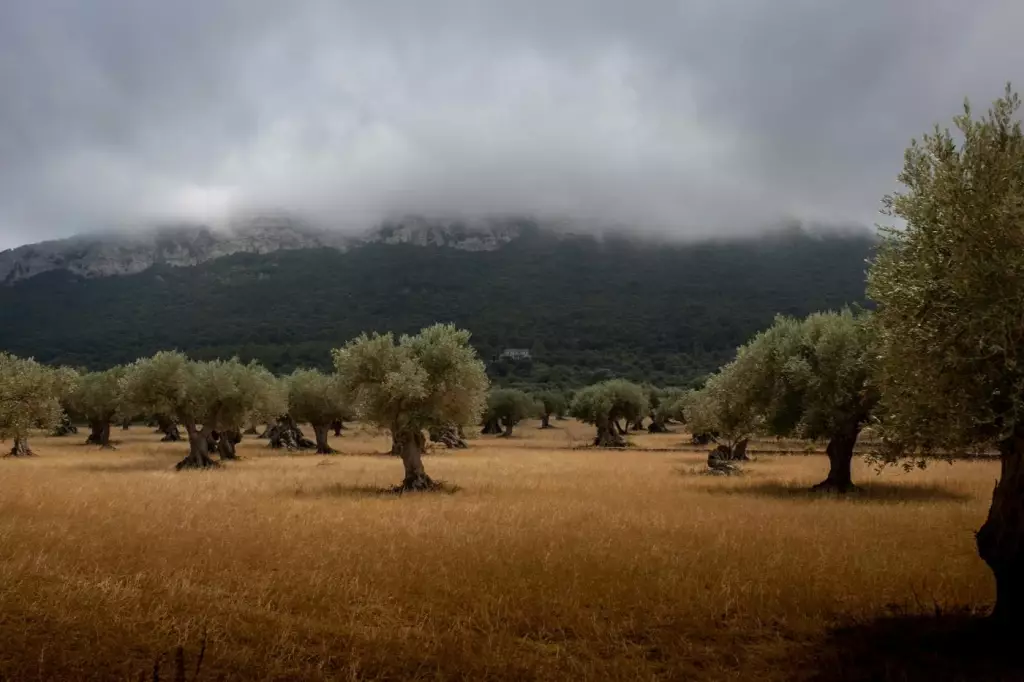
If the top 2-3 inches of soil feel dry, then it's time to water. Indoor olive trees have different needs and should be watered only when the top inch of soil is dry.
Here's a simple guide:
| Care Aspect | Outdoor Olive Trees | Indoor Olive Trees |
|---|---|---|
| Soil moisture depth | 2-3 inches | 1 inch |
| Watering frequency | Once a month | When topsoil is dry |
Be cautious with potted trees as they can be more susceptible to cold damage.
When you water, do so during the warmer part of the day and ensure it has time to absorb before temperatures drop, as moisture insulates the roots from cold temperatures.
Bear in mind that proper drainage is essential to prevent root rot, as olive trees do not fare well in soggy soil.
If you're unsure, it's better to err on the side of underwatering rather than overwatering during the cooler months.
Watering Techniques for Optimal Growth
To cultivate healthy olive trees, understanding the precise watering techniques is crucial. The aim is to balance adequate hydration with the tree's natural resilience to drier conditions.
Monitoring and adjusting water levels
Utilize a moisture meter to gauge soil moisture regularly. Olive trees thrive when the top 2-3 inches of soil are dry, signaling it’s time to water. Adjust watering based on readings rather than a fixed schedule.
Fertilization and watering
When fertilizing, couple it with watering to help nutrients permeate the soil. Compost can be added to enhance soil moisture retention, thus reducing the need for regular water.
Regular irrigation schemes
Implement a regular irrigation plan such as a drip irrigation system to provide a steady supply of water. This is particularly effective in maintaining ideal moisture levels without over-saturating the soil. Irrigation system costs around $1,500 - $3,000 per acre.
Use of mulch
Applying mulch around the base of your olive trees can help maintain soil humidity. It prevents rapid evaporation and supports steady soil moisture levels.
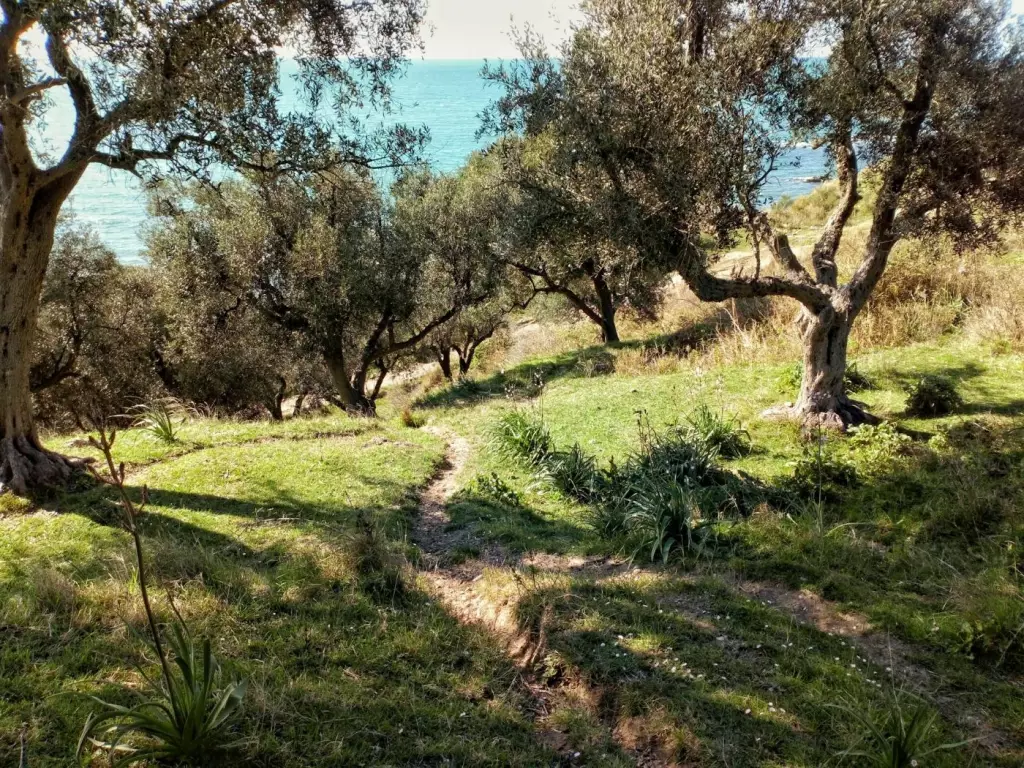
Special considerations for pots
Olive trees in pots need thorough watering when the top inch of the potting mix is dry. Be cautious of overly dense soil that doesn't drain well, and never use tap water high in salts.
Utilizing natural rainfall
Make the most of rainwater by allowing your trees to capture it. After periods of significant rainfall, you can often skip the next scheduled watering, as olive trees are adept at surviving drought conditions.
